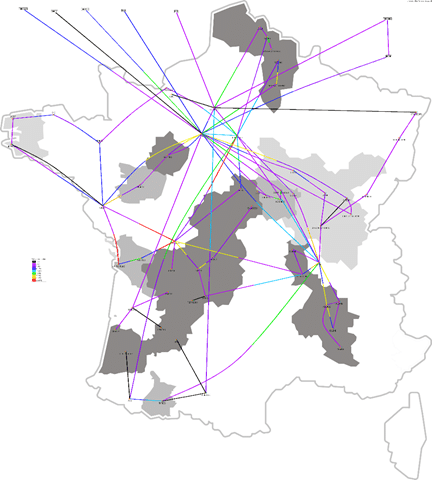Spotlight on the Centre d’Exploitation Réseaux, Services et Sécurité (CERSS – Networks, Services, and Security Operating Centre) in Pau.
Between managing exceptional network traffic and reorganising teams, the head of this unit, Thomas Fagart, explains to us how the teams ensured reliable connections for over 50,000 businesses and 1 million French households during the confinement period.

Thomas FAGART, Head of the Networks, Services & Security Operating Center
1) How did the teams from the CERSS organise themselves during these extraordinary times we are going through?
90% of CERSS staff is currently telecommuting, which is about 80 people.
The unit’s activities are divided into two parts:
Change management, which the Activation and Commissioning team deals with
- Commissioning Public Initiative Networks (active equipment)
- Marketing and Production (client connections)
- Network development
Incident management, which the Company, Client, and General Public Technical Support (client-reported incidents), Supervision (tool-reported incidents), and Network and System Expertise teams deal with on a 24/7 basis. Dealing with these incidents is crucial to keeping networks and systems operational.
Our organisational structure has been majorly affected over the past six weeks, with a drop of around 80% in activity due to reduced activity both in terms of connections and rollout.
As for incident management, activity also dropped by around 20 to 30% due to diverse factors both within and outside of the company. Nevertheless, the rest of the teams are continuing their work, maintaining connections for more than 1 million French households and 50,000 businesses during a period in which internet connectivity has essentially become as important as electricity.
Since 16th March, CERSS employees have been able to carry out their tasks without internal or external clients being able to discern any difference in the quality of the service provided.
We can therefore say that the proliferation of teleworking has proven a success during the confinement period, and demonstrates the effectiveness of the CERSS activity continuity plan.
2) Has the confinement period led to more network traffic?
The network has been extremely busy in general. This outstanding amount of traffic due to the confinement period did not cause any specific malfunctions because the networks are calibrated to accommodate such traffic volumes.
Under normal circumstances, we see traffic peaks in the evening when everyone gets home. During the confinement period, we found that this “evening peak” was spread throughout the day. Traffic volumes never exceeded this maximum peak.
Altogether, the fact remains that much more data has been transmitted on the public-initiative networks managed by Axione.
3) How did you manage these exceptional volumes?
All of the teams in charge of infrastructure developments were active in rolling out new “pipelines” on core networks. We certainly did not see any extraordinary spikes during the confinement period, public-initiative networks are undergoing major growth and traffic therefore increases every month.
So, the architecture teams and production units, alongside the CERSS, doubled their efforts to increase the capacity of Axione networks during March and April.

A map of Axione networks and their use in the morning

A map of Axione networks and their use in the afternoon